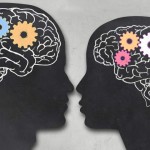Leukemia
It is a cancer of the blood or bone marrow characterized by an abnormal increase of immature white blood cells called “blasts”. There are two forms of leukemia:
Acute leukemia is identified by a rapid increase in the number of immature blood cells. Congestion due to immature blood cells makes the bone marrow unable to produce healthy blood cells. Prompt treatment is required in acute leukemia due to the rapid progression and accumulation of the cells, which then leak into the bloodstream and spread to other organs of the body. Acute forms of leukemia are the most common forms of leukemia in children.
Chronic leukemia is identified by the rapid increase of relatively mature, but still abnormal, white blood cells. It may take months or years to progress, the cells are produced at a much higher rate than normal, resulting in many abnormal white blood cells.
Acute leukemia must be treated immediately while chronic forms have been monitored for some time before treatment to ensure maximum effectiveness of therapy. Chronic leukemia mostly occurs in older age, but can theoretically occur at any age group. Leukemia is a treatable disease. Most treatments involve chemotherapy, medical radiation therapy, or hormonal treatments.
Symptoms
Symptoms of acute leukemia include:
Pale skin
Tiredness
Unusual and frequent bleeding, such as bleeding gums or nose bleeds
Easily bruised skin
Having repeated infections over a short space of time
High temperature (fever) of 38C (100.4F) or above
Excessive sweating
Bone and joint pain
Weight loss
As the symptoms develop at the later stages ( Chronic):
Infections (that occur over a short space of time)
Tiredness
Breathlessness
Weakness
Night sweats
Unusual bleeding and bruising
Swollen spleen and swollen lymph nodes (glands)
Causes
Acute leukemia begins with an alteration to the structure of DNA found in the stem cells responsible for producing white blood cells. This is known as a genetic mutation.
Chronic leukemia is an acquired genetic disease. Normal blood cells acquire changes to their genes that make them grow further.
Diagnosis
Microscopic Examination: The blood count will show an abnormally high number of lymphocytes (a type of white blood cell).
Bone marrow biopsy: To confirm a diagnosis of acute leukemia, the hematologist will take a small sample of bone marrow to examine under a microscope. This procedure is known as a bone marrow biopsy.
Cytogenetic testing: Cytogenetic testing involves identifying the genetic make-up of the cancerous cells.
CT scans: If patient has acute leukemia, a computerized tomography scan (CT scan) may be used to check that other organs, such as heart and lungs, are healthy.
Lumbar puncture: If it is felt that there is a risk that acute leukemia has spread to nervous system, a lumbar puncture may be carried out.
It is just an indicative information. Please consult your doctor for further diagnosis and treatment.
Treatments
Treatment for acute lymphoblastic leukemia is carried out in stages:
Induction – The aim of the initial stage of treatment is to kill the leukemia cells in bone marrow, and restore blood for proper working order and resolve any symptoms
Consolidation – The aim is to kill any remaining leukemia cells that may be present in central nervous system.
Maintenance – the final stage involves taking regular doses of chemotherapy tablets to prevent the leukemia returning.
Treatment for chronic leukemia:
Chemotherapy: It is found very effective especially in chronic cases. Combinations of fludarabine with alkylating agents (cyclophosphamide) produce higher response rates and a longer progression-free survival than single agent.
Bone marrow and stem cell transplants: For chronic lymphoblastic leukaemia is to have a bone marrow or stem cell transplant is another option.
It is just an indicative information. Please consult your doctor for further diagnosis and treatment.
Complications
Weakened immune system is a common complication of acute leukemia. In acute leukemia, person may bleed and bruise more easily due to the low levels of platelets (clot-forming cells) in blood. Bleeding may also be excessive. Complications of chronic lymphocytic leukemia
Richter syndrome: Symptoms of Richter syndrome include:
Sudden swelling of your lymph nodes
A high temperature that is not caused by infection
Night sweats
Weight loss
Abdominal pain
References:
National Cancer Institute
U S National Library of Medicine
NHS









